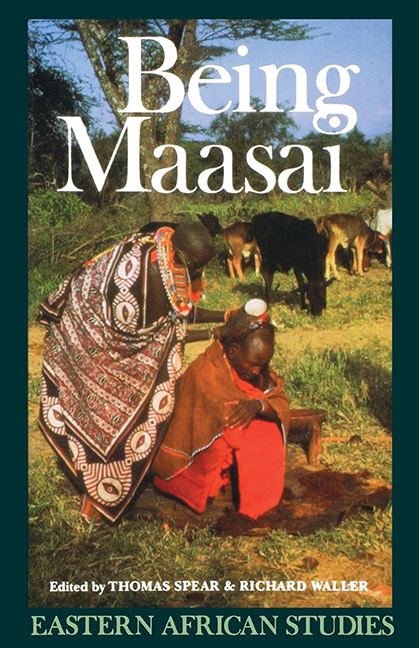Book contents
- Frontmatter
- Contents
- Maps, Figures & Illustrations
- Contributors
- Acknowledgements
- I Introduction
- II Becoming Maasai: Introduction
- 1 Dialects, Sectiolects, or Simply Lects? The Maa Language in Time Perspective
- 2 Becoming Maasailand
- 3 Maasai Expansion and the New East African Pastoralism
- 4 Aspects of ‘Becoming Turkana’: Interactions and Assimilation Between Maa- and Ateker-Speakers
- 5 Defeat and Dispersal: The Laikipiak and their Neighbours at the End of the Nineteenth Century
- 6 Being ‘Maasai’, but not ‘People of Cattle’: Arusha Agricultural Maasai in the Nineteenth Century
- III Being Maasai: Introduction
- IV Contestations and Redefinitions: Introduction
- V Conclusions
- Bibliography
- Index
5 - Defeat and Dispersal: The Laikipiak and their Neighbours at the End of the Nineteenth Century
from II - Becoming Maasai: Introduction
Published online by Cambridge University Press: 30 August 2017
- Frontmatter
- Contents
- Maps, Figures & Illustrations
- Contributors
- Acknowledgements
- I Introduction
- II Becoming Maasai: Introduction
- 1 Dialects, Sectiolects, or Simply Lects? The Maa Language in Time Perspective
- 2 Becoming Maasailand
- 3 Maasai Expansion and the New East African Pastoralism
- 4 Aspects of ‘Becoming Turkana’: Interactions and Assimilation Between Maa- and Ateker-Speakers
- 5 Defeat and Dispersal: The Laikipiak and their Neighbours at the End of the Nineteenth Century
- 6 Being ‘Maasai’, but not ‘People of Cattle’: Arusha Agricultural Maasai in the Nineteenth Century
- III Being Maasai: Introduction
- IV Contestations and Redefinitions: Introduction
- V Conclusions
- Bibliography
- Index
Summary
Among the Maasai the military defeat of the Laikipiak by a Purko- Kisongo alliance is legendary. According to Maasai tradition the curses and prophecies of their loibon, Mbatiany, so weakened the Laikipiak that, when the warriors of the alliance attacked the Laikipiak warrior village of II Kileti, they were able to gather unseen during the middle of the night in the centre of the village. The warhorn blew, the Laikipiak stumbled sleepily from their houses, and were summarily destroyed or ‘finished’. The crucial fighting of this period, which tradition represents in this single devastating defeat, probably occurred between 1874 and 1876. And it is said that after this the Laikipiak disappeared as a social-political unit.
Indeed, from the view-point of the Purko-Kisongo and the other Maasai, all of whom lived to the south and west of this fighting, the Laikipiak did cease to exist. And from this perspective, heretofore the only one recorded, it was not inconsistent to conclude that the few Laikipiak encountered after the mid-1870s were merely ‘remnants’ of this former enemy. For the Maasai such ‘remnant’ populations were not new. The traditions of pastoral peoples often recall individuals and families ‘being lost’, i.e. lacking a viable herd both to sustain themselves physically and to maintain the relationships necessary to exist socially. For the Maasai, evidence that the Laikipiak were ‘lost’ was clear. They had been militarily defeated and their prophet, Koikoti ole Tunai, had fled to the Trans-Mara region of western Maasailand. Their grazing lands, which stretched from at least Naivasha to the Leroghi Plateau, had been abandoned, and across the region large numbers of defeated Laikipiak were assimilated by the Purko, Kisongo and others whose lands were contiguous to those of these once powerful neighbours.
To the north, however, among the peoples of the eastern Lake Turkana basin, this conceptualization of a defeated people was vastly at odds with the Laikipiak population with whom they had to reckon.
- Type
- Chapter
- Information
- Being MaasaiEthnicity and Identity in East Africa, pp. 105 - 119Publisher: Boydell & BrewerPrint publication year: 1993



